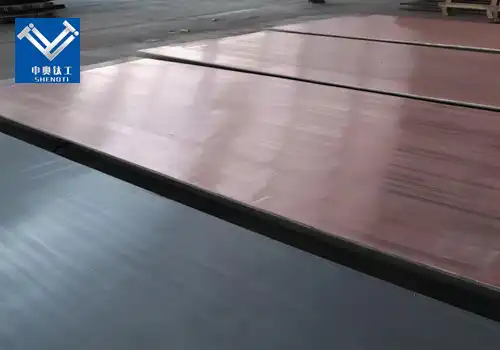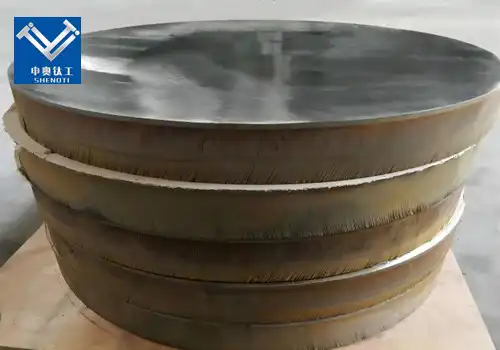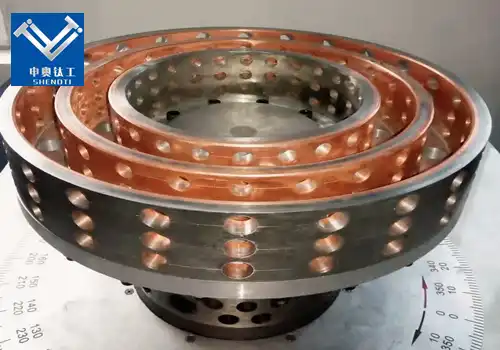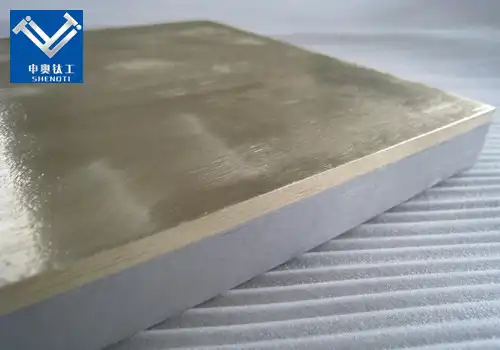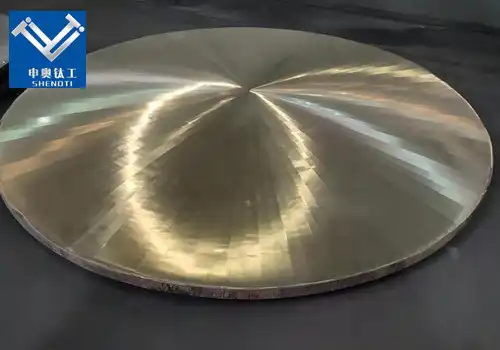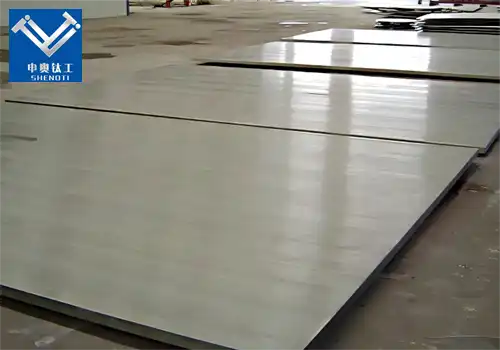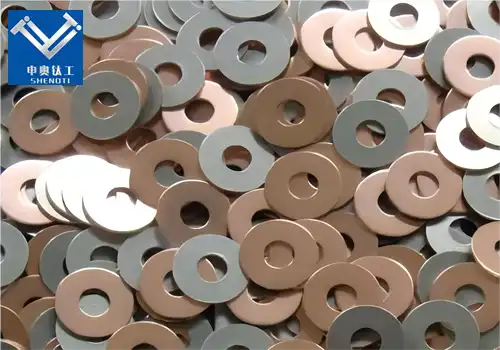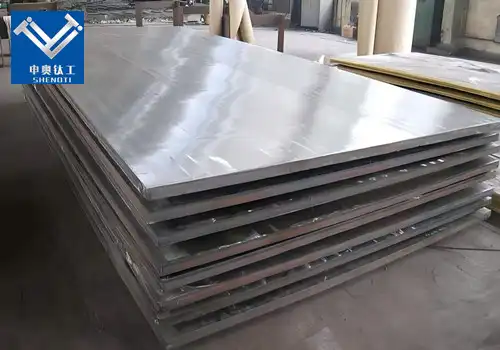
Thermal and Electrical Connectivity Copper Aluminum Clad Pad
2025-07-05 14:43:31
What Is a Copper Aluminum Clad Pad?
Copper aluminum clad pad refers to a bimetallic material combining copper (Cu) and aluminum (Al) through a metallurgical bonding process such as explosion welding or rolling. These pads deliver the best of both worlds: the high electrical and thermal conductivity of copper and the lightweight, cost-effective benefits of aluminum.
This layered structure is typically used in thermal interface applications, battery modules, electronic connectors, and high-performance power distribution systems. As industries push for higher efficiency and reduced costs, copper aluminum clad pad solutions have become essential for modern engineering challenges.
Why Choose Copper Aluminum Clad Pads Over Traditional Materials?
Conductivity & Lightweight Design
One of the most compelling reasons to adopt copper aluminum clad pad products is the unique combination of material properties:
Copper Layer: Offers high conductivity (approximately 97% IACS) and excellent corrosion resistance.
Aluminum Layer: Provides lightweight performance, reduced material costs, and easier machinability.
By combining these two metals into a unified pad, engineers can create efficient interconnects that reduce weight while maintaining excellent thermal and electrical flow.
Cost Reduction Without Compromising Performance
Copper prices continue to fluctuate globally. Replacing full copper pads with copper aluminum clad pads can reduce raw material costs by up to 40%, particularly in applications where thermal conductivity is vital but the full mass of copper is unnecessary.
How Are Copper Aluminum Clad Pads Manufactured?
Explosion Welding (Explosive Bonding)
This high-energy process uses controlled detonation to force copper and aluminum plates into metallurgical contact. The resulting wave-like interface ensures a robust bond without intermediate layers or solder.
Hot Rolling Composite Technology
Hot rolling is another advanced method, especially effective for large-scale production. Copper and aluminum layers are heat-treated and pressed together under controlled temperature and pressure, creating a stable, laminated structure.
Diffusion Bonding for Fine Applications
In precision electronics, diffusion bonding can be used to join copper and aluminum at the atomic level, resulting in minimal thermal resistance and high mechanical stability.
Each of these methods ensures that copper aluminum clad pads meet the structural and electrical requirements of modern industrial environments.
Key Applications of Copper Aluminum Clad Pads
1: Electric Vehicle (EV) Battery Modules
Modern EV batteries require highly conductive, lightweight, and corrosion-resistant terminals. Copper aluminum clad pads are widely used in battery connectors, busbars, and transition joints between different battery cells.
2: Renewable Energy Systems
In wind turbines and solar energy systems, copper aluminum clad pad technology supports high-current transfer while minimizing material weight—crucial for load-bearing structures and long-term efficiency.
3: Power Electronics & Heat Sinks
These clad pads are commonly used in IGBT modules, high-power converters, and heat dissipation plates due to their dual conductive and thermal performance.
4: Communication Equipment & Servers
In 5G base stations, network servers, and data centers, copper aluminum clad pads ensure efficient power distribution and thermal management for sensitive microelectronic components.
Advantages of Copper Aluminum Clad Pads
|
Feature |
Benefit |
|
High Conductivity |
Ensures excellent electrical and thermal transfer |
|
Lightweight |
Reduces overall weight by using aluminum |
|
Cost-effective |
Lowers cost compared to full copper pads |
|
Anti-corrosion |
Improved lifespan in harsh environments |
|
Strong Bonding |
Resistant to delamination and thermal fatigue |
|
Eco-friendly |
Reduces material waste and energy use |
These benefits make copper aluminum clad pads an optimal choice across multiple industries, especially where energy efficiency and size reduction are key drivers.
Industry Standards and Quality Control
To meet international demands, high-quality copper aluminum clad pads are manufactured in compliance with ISO 9001, ASTM B432, and GB/T 12769 standards. Advanced ultrasonic testing, X-ray inspection, and tensile strength testing ensure product integrity and consistency.
Frequently Asked Questions (FAQ)
1: What is the typical thickness of a copper aluminum clad pad?
A: Thickness varies depending on application, but a common ratio is 70% aluminum and 30% copper. Typical total thickness ranges from 1.5mm to 10mm, customized per design.
2: Can copper aluminum clad pads be laser welded or machined?
A: Yes. These pads can be machined, punched, or laser-welded using specialized tools that accommodate the differences in metal hardness and melting points.
3: Are copper aluminum clad pads suitable for high-temperature environments?
A: Yes. High-bonding strength and thermal resistance allow use in environments up to 300°C, depending on bonding method and layer thickness.
Technical Specifications of Copper Aluminum Clad Pads
|
Parameter |
Value |
|
Copper Conductivity |
≥97% IACS |
|
Aluminum Density |
2.7 g/cm³ |
|
Tensile Strength (bond zone) |
≥130 MPa |
|
Shear Strength |
≥85 MPa |
|
Service Temperature |
-50°C to +300°C |
|
Corrosion Resistance |
High in saline and acidic environments |
These specifications ensure compatibility with demanding environments, especially in electronics and renewable energy sectors.
Custom Copper Aluminum Clad Pad Solutions
Many manufacturers offer tailored solutions based on:
Metal ratios (Cu:Al): Adjusted to meet electrical vs. weight needs.
Shapes: Rectangular, circular, or irregular based on housing design.
Finishes: Polished, etched, or coated surfaces to match installation environments.
Drilled holes or slots: For bolt-on or soldering compatibility.
Custom designs allow copper aluminum clad pads to be seamlessly integrated into complex systems such as battery management units (BMUs) or inverter heat sinks.
Sustainability in Copper Aluminum Clad Pad Production
Sustainability is a rising concern in all manufacturing sectors. The use of copper aluminum clad pads supports:
Material efficiency: Less copper usage lowers environmental impact.
Energy savings: Lightweight materials reduce energy consumption during transport.
Recyclability: Both copper and aluminum can be easily separated and recycled.
Why Your Project Needs Copper Aluminum Clad Pads
Whether you're working in automotive electrification, power systems, or next-gen electronics, copper aluminum clad pads deliver unmatched value by combining conductivity, strength, and economy. Their versatile applications, durable structure, and design flexibility make them a forward-looking solution for modern engineering demands.
Contact Us for Copper Aluminum Clad Pad Solutions
Looking for a trusted manufacturer of copper aluminum clad pads?
Email: zh@baojiti.com.cn
Website: www.shenaocladplate.com
Company: Baoji City ShenAo Metal Materials Co., Ltd.
Specialization: Clad metal plates, titanium anodes, copper-aluminum bimetallic materials
Let our engineers customize the right clad solution for your industry. Get a quote today!
YOU MAY LIKE











